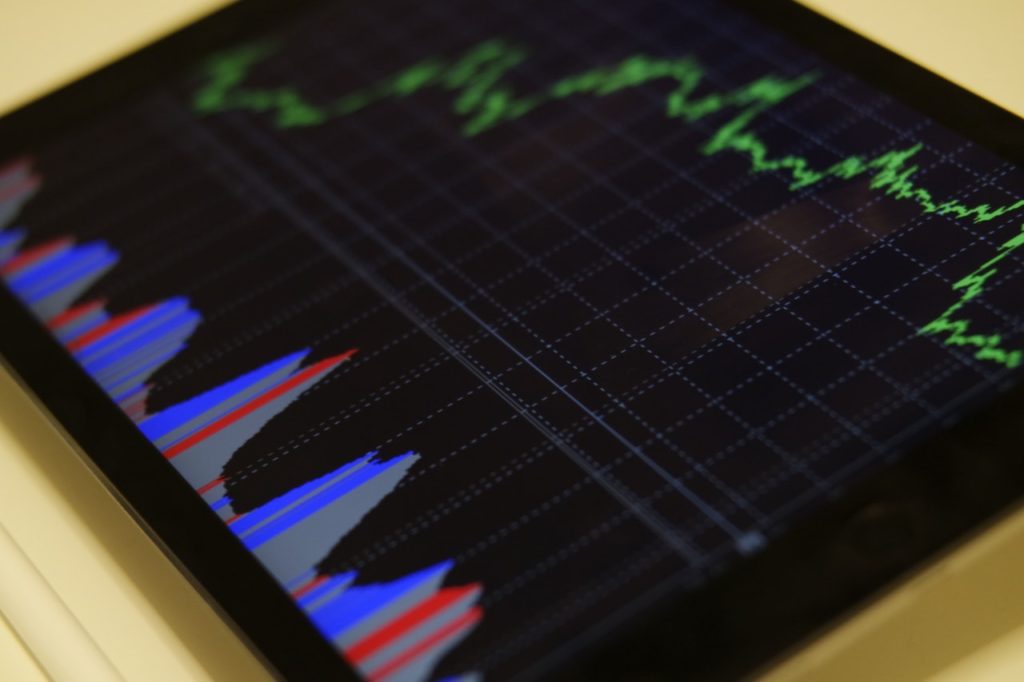Technical analysis analyzes market price action, including studying past prices, volume, and other data. This analysis helps to understand current or future price trends better. Traders use technical analysis to identify patterns that allow them to anticipate the direction of the markets. Technical Analysis also helps traders understand when they should enter a trade and which trading strategies might be helpful based on their observations.
Types of Technical Analysis Used by Forex Traders
Moving Averages
Forex traders use moving averages to identify the general direction of the market and breaks in price actions. Moving averages take the form of a line drawn on a graph or chart. The line gauges the mean or average value of a currency pair over an amount of time.
Moving averages give a trader a glimpse of the general market trend of a currency pair. Moving averages over a shorter period have a quick reaction to price changes in the market.
Pros
- Moving averages are a more stable indicator than other technical analysis techniques.
- Moving averages are ideal for traders working on long-term time frames.
Cons
- Since moving averages are based on historical data, they are slower in responding to fast-evolving market trends.
- Moving averages are not ideal for traders working on short-term time frames.
Forex Oscillators
Oscillators indicate when the market trend reaches a limit, and a move in the opposite direction is likely.
For example, when a price is too high, analysts consider it overbought, and it is likely to stabilize or drop as traders try to improve their profits. This direction is called a negative correction. Subsequently, an oversold market triggers a price change in the opposite direction and is a positive direction.
Typically, it is better to sell overbought and buy oversold currency pairs.
Pros
- Oscillators help traders identify opportunities and trends, hence maximize their profits before a price movement occurs.
- They offer insight into the momentum and speed of the market.
Cons
- Sometimes, oscillators give false signals.
Stochastic
Stochastic indicate zones of oversold and overbought conditions. They also indicate possible price reversals. There are several types of stochastic, though slow stochastic is the most commonly used. Stochastic consists of two moving averages that are bound between zero and 100.
Stochastic is a favorite indicator among forex traders because it is accurate. It helps traders to identify good entry and exit points.
Pros
- Stochastic indicators offer clear signals and are easy to understand.
- Stochastic offers a signal on a single forex chart, creating several opportunities for traders to consider.
Cons
- Stochastic can produce false signals.
- They are not ideal for shorter trading time frames since the timelines for using them may extend too long.
Fibonacci Retracement Lines
Fibonacci Retracement Lines is a technique that finds resistance and support levels on a trading instrument. Markets retrace or react by smaller portions of a more significant move, and traders can predict the smaller portions.
Fibonacci Retracement Lines is a series of continuous patterns. Traders use this technique to determine target prices and place stop-loss orders.
Pros
- Because of this technique’s long history in forex trading, successful traders vouch for its value as an analysis tool.
Cons
- Fibonacci Retracement Lines is not grounded on any economic theory or mathematical logic; thus, critics consider it very subjective.
Relative Strength Index (RSI)
Traders use RSI to find overbought or oversold conditions in the market. This analysis tool is helpful for forex traders that like to buy low and sell high. RSI values are plotted ranging from zero to 100, with zero considered oversold and 100 overbought.
Pros
- The RSI indicator is easy to use.
- Traders can set RSI alerts, which will notify them once a currency pair meets a certain threshold.
Cons
- RSI may give a false signal and is ideal as a starting point for evaluations.
Bollinger Bands
Bollinger bands are values plotted at a standard deviation level below and above a price’s moving average. They help identify prices that are low or high on a relative basis. If the price surpasses a moving average, then it indicates the beginning of a trend.
Pros
- Bollinger bands offer an easy visual representation of a market’s volatility.
Cons
- Bollinger bands reflect a past performance; hence challenging to use them in identifying opportunities early.
Conclusion
Technical analysis in forex trading can be profitable if you know how to use it effectively. However, a single tool may not give you your desired results. It is always better to combine several tools in your analysis.

